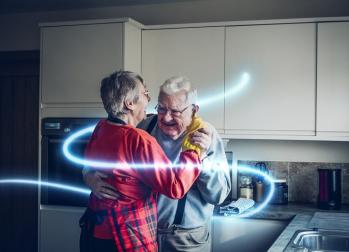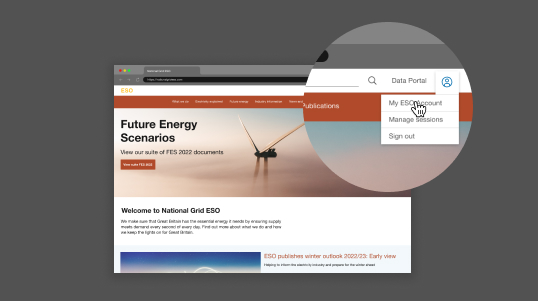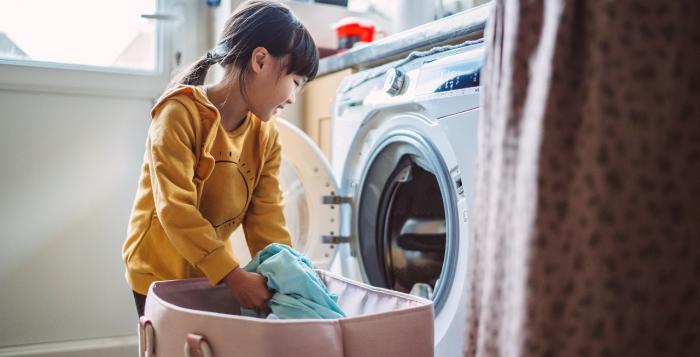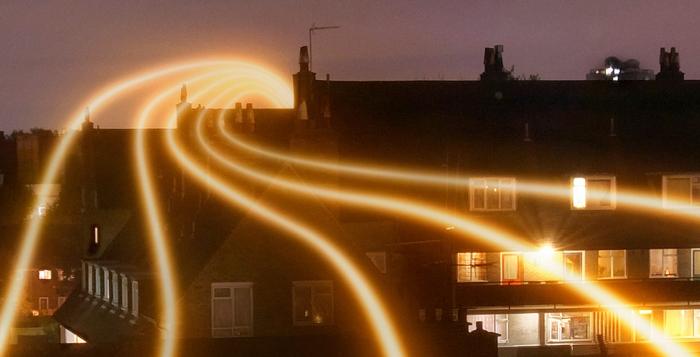In 2022, the ESO launched a new Demand Flexibility Service (DFS) for the winter period, which rewarded households and businesses to shift their electricity use during DFS events. Over 1.6 million households and businesses participated in supporting the ESO balance the grid at peak times.
DFS is returning for the 2023/24 winter, and we hope to see even more households and businesses get involved.
To ensure that there are rewards in place for participating households and businesses, even if the service is not needed to manage the electricity system in real-time this winter, the ESO will run at least six test events before the end of March 2024.
The first six of these tests will pay registered DFS providers (such as energy suppliers, aggregators, and third parties) a guaranteed minimum price of £3KWh, which they will pass onto their customers through rewards such as pounds, points, or prizes.

Why have we introduced the Demand Flexibility Service?
Creating more flexibility on our electricity system is vital for running a clean, green and fair system of the future. DFS is a real breakthrough and gives households and businesses a direct opportunity to participate in flexibility services, with 1.6 million homes and businesses participating in the service last winter. The service could accelerate flexible energy use by many years and will be watched with much interest by other countries.
In terms of what it means for our electricity system, if we can reduce electricity demand by rewarding participating customers to turn down when we need them to, it means we might not have to bring on expensive and polluting fossil fuel generators. This saves carbon and also saves all consumers money. And in times of system stress, when margins are tight, it could also help us avoid an emergency response.
If you are a household with a smart meter, or a business site with half-hourly metering, you’ll be able to sign up either your retail energy supplier or online providers/apps who are participating in the service. We’ll have a list of registered providers on our webpage and will be updating it regularly from the start of the service.
If you have signed up to take part in the DFS with a registered DFS provider, they’ll contact you before a DFS events to let you know the DFS times of when we’ll like you to shift your electricity use.
DFS events usually run for one hour, however if we need to use DFS for a live event, this could run for a longer period. It’s a voluntary service and there are no penalties for not participating. In order to be eligible to receive an incentive from your provider you do however have to reduce your energy use during the DFS event times.
When you sign up to take part in DFS you will need to authorise your provider to access your smart meter so they can read your data every half-hour for the duration of the service.
Participant electricity suppliers, aggregators are being added to a Registered Provider list on the DFS page, and will be updated regularly as new providers join the DFS.
In support of consumer protection, the registered providers list also outlines which providers are aligned to the FlexAssure and HOMEflex codes of conduct which set out minimum standards for flexibility services such as DFS.
Households could reduce their power consumption during tests or live events by choosing to run power-hungry appliances such as washing machines, clothes dryers, dishwashers, electric showers and immersion heaters before or after the event. Another option would be to reduce energy usage (e.g. using a microwave instead of the oven) during the event window.
Efficient lightbulbs and small appliances such as modern televisions consume very little electricity and so it is unlikely to be worth adapting usage of these during an DFS event.
Using electrical goods overnight can create increased risk of an incident, we advise all consumers to follow the guidance offered by organisations such as Electrical Safety First and where possible to avoid using their electrical appliances overnight.
Frequently Asked Questions
For households and businesses wishing to be rewarded for reducing electricity demands on the grid at certain times, you can do so via a registered DFS provider.
Many retail energy suppliers are taking part the ESO’s Demand Flexibility service and will contact you if they are taking part this year. There are a number of online/app providers who can provide access to the service by linking directly to your smart meter data without contacting your energy provider as well. Please note households can only take part with one DFS registered provider at any time.
Participation in the service is entirely voluntary and there are no penalties linked to the service if you are not able to reduce your electricity at these times.
Note: Households need a smart meter to participate in this service, consent for marketing, and to access your half hourly electricity metering data.
From November 2023 to the end of December 2023 the ESO will run six tests to support households and businesses in signing up to participate.
These test events will incorporate a guaranteed acceptance price, ensuring that if providers bid to participate at £3/KWh (kilowatt hour) or less they will be guaranteed to be accepted. DFS registered providers will in turn reward households and businesses for shifting their electricity demand during this time.
The tests are front-loaded to encourage early participation in the service and understand how different lead-in times impact delivery volumes.
From January 2024 to the end of March 2024 the ESO will look to run a further six tests. If the forecast volume of participation in the service exceeds 1.25GW at this stage, these tests will be competitively tendered, without the use of a GAP.
DFS tests will last for one hour.
Live events are likely to last for a longer period if they are needed and could run up to four hours each. These are most likely to be held late afternoon/ early evening on weekdays when demand for electricity is highest.
Tests and live events are most likely to take place across weekday evening peaks.
This will depend on your individual circumstances, how much electricity you normally use and the rewards that your particular DFS registered provider is offering for taking part in the service.
If for any circumstance, including for safety reasons, you are unable to reduce your electricity usage during a DFS event, there are no penalties. You will just pay for your usage as usual – there are no further implications for not taking part.
No, this service is about reducing your electricity use where you are able to – we are not asking people to go without electricity.
Efficient light-blubs and small appliances such as modern televisions consume very little electricity and so it is unlikely to be worth adapting usage of these during a DFS event.
Participating in the service is completely optional and customers do not have to take part in all events if they choose not to.
In order to verify delivery of demand reduction we need data in 30-minute increments.
This means that registered DFS providers are only able to sign up households and business who have smart meters capable of sending half-hourly readings.
We will continue to look at how to further expand the eligibility for services such as this in future so that we can increase participation in our services, as flexibility becomes a more automated and daily option to help consumers save on their energy bills.
As part of a range of tools designed to help manage the electricity system this winter, we want to collaborate with energy suppliers/aggregators to reward participating households and businesses for helping support balance the grid this winter.
ESO’s Demand Flexibility Service approved for 2023/24 winter
Energy regulator Ofgem has granted approval to our Demand Flexibility Service (DFS) which will be available from 30 October 2023.



